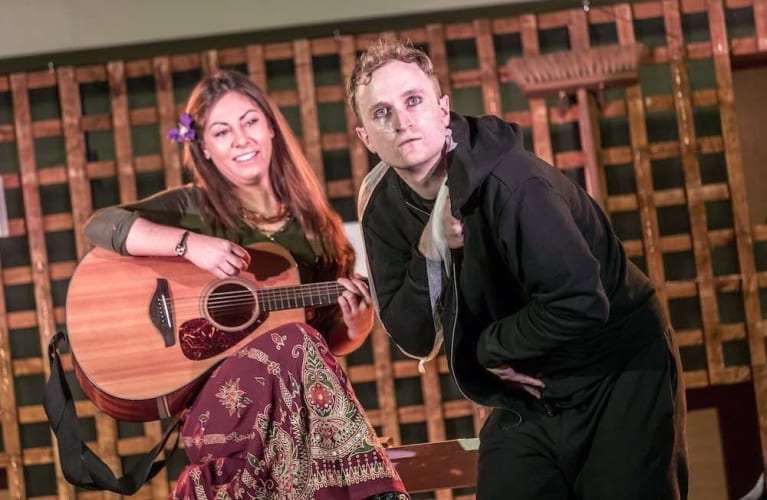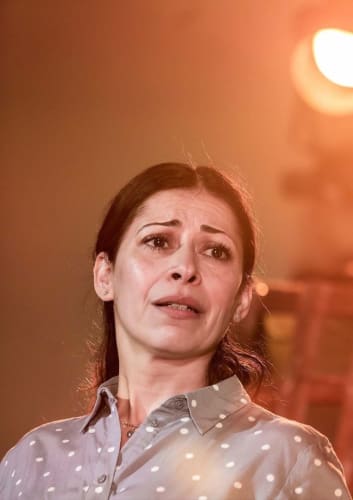You know when you’re given a copy of the script with your theatre programme that you’re generally in for something rather special. And this play is, after all, by prolific, multi-award-winning playwright Hattie Naylor, whose recent work includes, among many others, the inspiring Clause 39, performed in Salisbury Cathedral by Stage 65 just two years ago.
As the Crow Flies tells the story of Beth, whose recent abandonment by her long-term partner Matthew in favour of his previous lover has left her devastated. To make matters even worse, she finds herself in social isolation. What had been their idyllic rural retreat, while together, is now a barren landscape of desperate loneliness. Who can she turn to?
Not Meg, her sister, whose frequent but insensitive phone calls just make things worse, her isolation more painful.
And since As the Crow Flies at Salisbury Playhouse is in the middle of a tour of twenty-five other venues around southern England, most of them village halls, there must surely be a degree of empathy among at least some members of the various audiences, particularly those who have had to travel there from remote farmhouses.
So we have Beth, played by Natalie Campbell, in her early forties, abandoned and lonely, dressed in workaday shirt and jeans, still tending to her garden and going about the ordinary routines of her life in spite of her state of near despair.
But we also have Beth, her younger self by twenty years, in a beautiful, floating dress, providing a musical commentary as an accompaniment to the older Beth’s sad narrative, reminding her of happier times and guiding us on our emotional pathway with her beautiful songs. Every tragedy should have someone like Imelda Warren-Green who, together with composer Dom Coyote, gives us such a poignant and tender commentary on the unfolding story.
But there’s another member of the cast, isn’t there? Alfie, the all-important bird, the wounded crow, who enters Beth’s life at just the right moment to give her the emotional support she so badly needs. Would they have a real bird? Animals have had parts in plays before. There was Crab the dog in Two Gentlemen of Verona for a start. No. This crow is a human actor, Tom Brownlee.
Dressed in black, with a realistic crow’s head hood complete with beak, he is entirely convincing, whether stealing Beth’s gloves, making raucous comments on her behaviour or opinions or just being himself. And when the hood is removed, we still believe in him. With his jerky movements and ability suddenly to appear at different levels on the set, we are sure he can fly, and as we follow his conversations with Beth we want to join in. We even begin to share Beth’s desire to try flying for herself.
And what fascinating things we discover about the breed as Beth prepares to give her talk on crows to the assembled villagers, about their intelligence, their playfulness, even their sense of humour and the fact that Russian crows have been found using plastic lids as sledges. Then there’s the miracle of their migration and the theory of "quantum entanglement", which is supposed to ensure they’re travelling in exactly the right direction to reach their destination.
But what of Alfie and Beth? If Beth moves back to London, what will happen to Alfie? And isn’t there something about him which may lead to a total new direction for the plot?
Go and see it if you live near one of the villages where it’s being shown.
Whether or not the subject of crows excites your interest, it is a delight.

